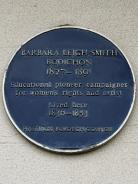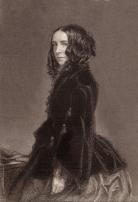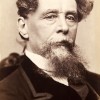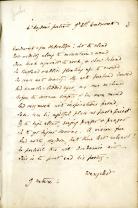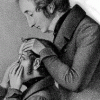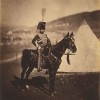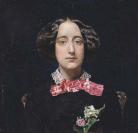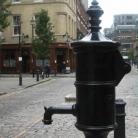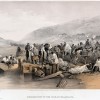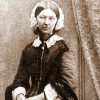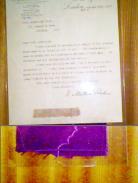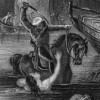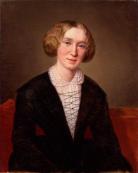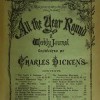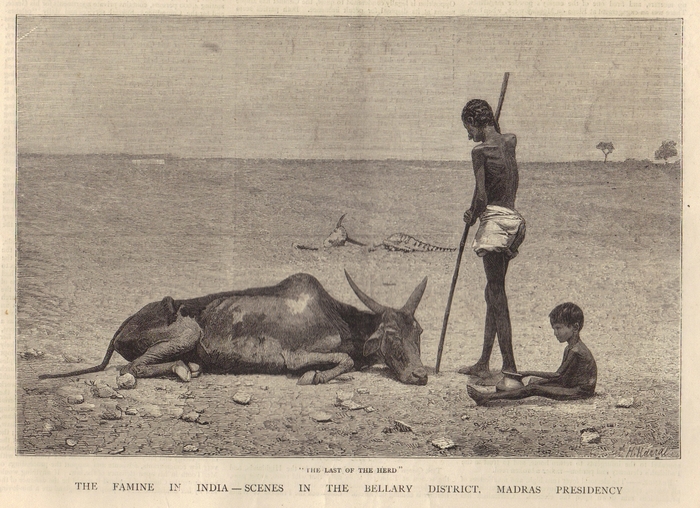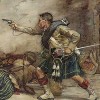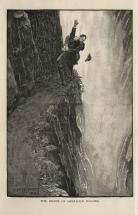Victorian Literature and Politics for the Present - Timeline
Created by Ashley Nadeau on Mon, 08/16/2021 - 22:57
Part of Group:
The Victorian period was one of great change for Britain. Comprised of the years of Queen Victoria’s reign (1837-1901), it featured the rapid industrialization and urbanization of Britain, and the radical expansion of the British empire. Although these changes improved the quality of life for some Victorians, many more were forced to work under inhumane conditions, live in unsanitary and insalubrious environments, or suffered the violent oppressions of colonial rule. While we may think of the Victorian period as a distant, different era, this class argues that Victorians faced some of the same issues we deal with today, including systemic racism, opioid addiction, ecological disasters, and public health crises, to name but a few.
“Victorian Literature and Politics for the Present” revisits texts both familiar and new - canonical and not - through the lens of current events. Addressing a range of genres, this course examines historical and philosophical trends that shaped the era’s literature and were shaped by it. Specifically, it will explore how the Victorians addressed, and sometimes avoided, issues of racial oppression, class conflict, public welfare, imperial plunder, and ecological devastation. Moreover, it will consider what parallels and throughlines we can draw between the Victorian era and the twenty-first century and contemplate the value of continuing to study Victorian authors and texts today.
As a class we will be using the resources of the Collaborative Organization for Virtual Education (COVE) to create a collaborative Digital Humanities project in Victorian studies in which we explore the intersecting dynamics of race, gender, class, ecology, and empire of the Victorian Era. To complete this project, you will need to add one timeline element, one map element, and one gallery image related to these issues to our collective COVE resources. Your contribution should provide a brief overview of a significant and interesting cultural or political event, structure or location, or artwork or illustrative image, as well as a brief reflection that connects that event to our course themes and texts. Each contribution should be approximately 300-500 words. Consider interlinking the three elements, exploring a particular topic in greater depth.
Timeline
Chronological table
| Date | Event | Created by | Associated Places | |
|---|---|---|---|---|
| 8 Apr 1827 |
Barbara Leigh Smith BodichonBarbara Leigh Smith Bodichon, born in 1827, grew up in Whatlington Britain. Barbara was raised by her father Benjamin Leigh Smith. Interestingly enough, Florence Nightingale was Benjamin’s niece, and he grew up with four sisters and one brother. Her father, Benjamin Leigh Smith, was considered a Dissenter. Similar to Margaret’s father in North and South, Barbara’s father held radical views and moved her family to Sussex England. Benjamin Leigh Smith was a supporter of Free Trade and was considered a Unitarian and he consistently donated to charity. For example, in 1826, he built a school for the poor of Vincent Square. Benjamin Smith had a wide abundance of illegitimate children, however, he still became a magistrate in England. Eventually, this event led to her retirement from parliament. Barbara’s situation growing up provided her with the opportunity to live her life more freely than women typically were able to. This being said, Barbara was still denied an education at Cambridge. In her early years, Barbara was a painter and she used her high societal status to interact with the bohemian and the artistic. Due to her father’s high standing, Barbara was continually accepted in her community. Likewise, she was introduced to high-standing people such as William Hunt, Elizabeth Barrett Browning, and George Eliot. In 1854, Barbara wrote A Brief Summary, in Plain Language, of the Most Important Laws Concerning Women. In this paper, Barbara examines the legal restrictions placed on women in England. Barbara was particularly concerned with the women's ‘non-existence within marriage.’ Or in other words, the legal property given to the man of the relationship during the marriage (all legal belongings, children, etc.). Because of this, Barbara formed a committee to make a reform on women’s legal rights within marriage. The committee gained wide attraction and support, it even received 26,000 signatures in 1856. However, it was eventually rejected. This being said, parliament passed ‘The Married Women’s Property Bill’ in 1857. Barbara’s work had a huge influence on the Late-Victorian Feminist movement. One of the influences of the movement “invented new communities of their own-communities that were defined not by marital status but by a mutual desire to transform late-victorian society” (Elford 32). Once again, this was one of the main focuses of Barbara’s feminist work. As we’ve discussed in class, Barbara’s actions were a response to the ‘women-question,’ or in other words, she was interested in a non-married women’s role in society. For Barbara, she wanted to advance the cause of women. We can see similar questions brought up in Jane Eyre and North and South. Likewise, Barbara, like both Jane and Margaret ran into a type of inheritance that led each of these women to question their role in society. Works Cited ELFORD, JANA SMITH. “The Late-Victorian Feminist Community.” Victorian Review, vol. 41, no. 1, Victorian Studies Association of Western Canada, 2015, pp. 32–35, http://www.jstor.org/stable/24877740. Wojtczak, Helena. “Barbara Leigh Smith (Madame Bodichon) and Hastings.” Barbara Bodichon and Hastings, victorianweb.org/gender/wojtczak/bodichon.html. |
Erin Stokes | ||
| 13 Apr 1829 |
The Catholic Emancipation ActIn 1829, partly in response to widespread agitation throughout Ireland led by Daniel O'Connell's Catholic Association and the possiblity of revolution in Ireland, the Catholic Emancipation Act, enabling Catholics to sit in the British Parliament at Westminister, was passed. (Wohl) A little bit more context for why there had to be a catholic emancipation act. In 1800, the Act of Union created the United Kingdom by merging Great Britain and Ireland. This made parliament directly responsible for Irish affairs and had direct responsibility for the fate of a number of Roman Catholics equal to more than a third of the total population of England and Wales.(Chadwick) So the Roman Catholics, who were mostly Irish, had no say in parliament in their governing body and union for almost 30 years. What is interesting to see in this fight for rights and after the Catholics finally got emancipation—how each side saw this act. The Catholics would see this as being able to have more say and deservingly enough since they are a big portion of the population. While the Church of England saw this emancipation as a major loss, letting Catholics be able to have any say in the dealings of their established church. Which is ironic seeing as they have had say in the lives of the Catholic Church all the way up to this point. This power struggle gives more light and context of our reading of North and South. When Margaret learns that her brother is a Roman Catholic, there is a moment of interpersonal confusion on how to see her brother since he isn't part of the Church of England. But at the same time she thinks of her dad, and how he gave up his position as minister in the church and she doesn't really know where everyone stands in religion and in class. She realizes that in regards to her brother she might be the same, where as before, she would be entitled to think herself above a Catholic because of her dad holding a position in the Church of England. Overall this emancipation would lead to a more pluralistic society with more religions gaining more rights, although there would still be internal and external discrimination, as we saw from the internal thoughts of Margaret.
Works Cited Chadwick, Owen. The Victorian Church. London: Adam & Charles Black. 1966. Wohl, A. (2018, June 18, Created 1989). Catholic Emancipation. Catholic emacipation. Accessed October 29, 2021, https://victorianweb.org/religion/cath2.html. |
Austin Hermansen | ||
| 25 Dec 1831 to Feb 1832 |
Jamaican Slave Rebellion of 1831
An uprising and rebellion of slaves in Jamaica would go on to affect the emancipation of hundreds of thousands of slaves in Great Britain, as well as its colonies. Wonderful Adventures of Mrs. Seacole in Many Lands takes place in Jamaica, the birthplace of Mrs. Seacole, as well as the British colonies. The Jamaican Rebellion, and the resulting emancipation of slaves, largely influence this piece and the life of Mrs. Seacole, regardless of the event never being directly addressed. Work Cited Duperly, Adolphe, The Destruction of Roehampton Estate. 1832 Momodu, Samuel. “The Baptist WAR (1831-1832) •.” •, 17 Sept. 2019, https://www.blackpast.org/global-african-history/baptist-war-1831-1832/. Zoellner | May 28, Tom. “The Uprising of 60,000 Jamaicans That Changed the Very Nature of Revolt.” Zócalo Public Square, 11 July 2020, https://www.zocalopublicsquare.org/2020/05/28/jamaican-uprising-samuel-s... |
Brielle Tidwell | ||
| The start of the month Dec 1833 to Winter 1850 |
Child Labor Laws in Victorian Era: The Factory Acts
In nineteenth-century Victorian England and even through the beginning of the twentieth-century, child labor laws were virtually nonexistent and, where they did exist, went largely unenforced by figures in government until the Factory Act of 1833 was passed by English Parliament which offered protections, if a bit scant, to the class of citizen most in need of protection: children. For an upper-class child in Victorian England, a day might be spent tutoring under a nurse between meals in a private estate; however, for the lower class, children were often forced into public jobs that would help supplement their family’s income with some parents treating the children themselves as sources of income. Thus, in the words of a writer with victorianchildren.org, “having more children who worked raised the income of the home,” as children were pawned off to employers who would offer the child board and pay parents as little as fifteen shillings (about $69.82 today) per year for a laborer who would work for upwards of fourteen hours per day and even into the night with scarce breaks for eating or resting (Victorian Children). For many children this life was normal, even expected, and after learning to behave under their new masters, they grew used to the ever-growing threat of death and disease hanging over them as they worked in factory and mining settings with poor ventilation, unclean conditions, and claustrophobic spaces that threatened to suffocate them at every turn. The Factory Acts of the nineteenth century helped to revolutionize how children were protected from the labor force, and, although provisionary and largely unenforced, they helped lay a groundwork that would outline child liberation in the twentieth century. Child Labor Before 1833 Before the signing of the first Factory Act which helped protect the workers in cotton mills, mines, and industrial factories, legal protections for working children were almost non-existent. Some children started working in factories as young or younger than nine years, and their slight bodies were used to perform labor that even adults were unable to accomplish. Many children worked in mines where they were often strapped to a cart filled with coal and forced to pull it on their hands and knees to the opening of the mine for collection. Because the mines were not properly ventilated, respiratory problems and black lung were common among child workers who performed these tasks for twelve to eighteen hour per day (Victorian Child Labor). Other children worked in city cleaning as street sweepers or chimney sweeps, literally crawling into chimneys to clean them only to be scrubbed perfunctorily with salt water and sent down the next one. Without legal protections and a way to enforce them, children were tasked with the most dangerous jobs that ought to have been reserved only for the most able adults among them. To understand this issue more clearly than I can explain it, read the following excerpt from a transcript of an interview with a young woman who had spent most of her life as a laborer: Elizabeth Bently, called in; and Examined. What age are you? – Twenty-three. What time did you begin work at a factory? – When I was six years old. […] What kind of mill is it? – Flax mill. What was your business in that mill? – I was a little doffer What were your hours of labour in that mill? – From five in the morning till nine at night when they were thronged. […] What time was allowed for your meals? – Forty minutes at noon. […] Suppose you flagged a little, or were too late, what would they do? – Stap us. Are they in the habit of strapping those who are last in doffing? – Yes. Constantly? – Yes. Girls as well as boys? – Yes Have you ever been strapped? – Yes. Severely? – Yes. (Scott)
That excerpt was taken from an interview given before the Sadler Committee in 1831 who worked to give a voice to those who were victimized by the institution of child labor.
The Factory Acts Although poorly executed in the beginning, the laws passed by British Parliament were among the first in the world to provide any protections for children in the working class. The Factory Acts, as they would be called, began with an Act called the Cotton Mills Act in 1819. According to the official UK Parliament website, this first Act prohibited children younger than nine from working in cotton mills “with a maximum day of twelve hours for all those under sixteen,” (UK Parliament). The Act was narrow in scope and almost impossible to enforce, but it opened the door for a line of legislation that would follow to provide protections for the weakest in Victorian society. The next Act that would follow came in 1833 that demanded that no child under nine should be employed in any industry as well as limiting work for children under thirteen to no more than nine hours per day. It also provided children with schooling for at least two hours per day and prohibited work at night according to the UK National Archives (National Archives). These advances on their own were revolutionary in the early 1800’s, but what made the biggest difference for those children was the final stipulation of the law which required that four factory inspectors would be appointed to enforce that law and offer heavy fines to those who broke it. Following this Act, several others would be passed in 1844, 1850, and 1884 that would improve working conditions and further restrict working hours to only week-days and part of Saturday. Those laws then remained largely unchanged for the rest of the Victorian Era until the end of WWI. Although the new laws were not perfect and would have to evolve further, the Victorian Era ended with rights granted to workers that could not have been imagined by those soot covered children at its beginning.
Works Cited Moore, Amanda. Factory Act 1850. 2011. Web site. November 2021. Nye, Eric W. Pounds Sterling to Dollars: Historical Coversion of Currency. 2021. Website. November 2021. Scott, Jonathan F. Readings in European History Since 1814. Appleton-Century-Crofts, 1930. eBook. UK Parliament. The Factory Acts. 2021. Web Page. November 2021. victorianchildren.org. Victorian Child Labor and the Conditions They Worked In. 2 March 2013. Website. 1 11 2021. —. Victorian Children in Victorian Times. 11 December 2012. Website. November 2021. |
Kaden Eyre | ||
| Apr 1836 to Nov 1837 |
Pickwick PapersFrom April 1836 to November 1837, Charles Dickens’s The Posthumous Papers of the Pickwick Club is published in twenty monthly numbers, catalyzing the market for monthly serials. Articles |
Dave Rettenmaier | ||
| 28 May 1836 |
Elizabeth Barrett Browning dinner with WordsworthOn 28 May 1836, Elizabeth Barrett Browning met William Wordsworth at a literary dinner in London; EBB's cousin, John Kenyon, was the host and the event most likely occurred at Kenyon's main residence at the time: 39 Devonshire Place, London, which is right around the corner from EBB's residence at the time: 50 Wimpole Street. See the associated map. |
Dino Franco Felluga | ||
| Feb 1837 to Apr 1839 |
Oliver Twist
Related ArticlesHeidi Kaufman, “1800-1900: Inside and Outside the Nineteenth-Century East End” |
Dave Rettenmaier | ||
| 4 Jul 1838 to 1838 |
Huskar Pit DisasterThe Huskar Pit Disaster (also known as the Huskar Colliery Tragedy of 1838) was a terrible event that illustrates the horror children faced working in coal mines. First off, we must understand what coal mines were like. Coal mines were deep pits. They were usually around 300 feet underground. Huskar Pit was used as ventilation for the miners. Whole families often worked in the mines together. Children worked as trappers, hurriers, and thrusters, helping to bring the coal from the rock face to the surface by carts and passageways. While women worked as hurriers, most often. Trappers sat in the dark and waited for the carts to come pulled by the hurriers. Trappers also kept the mine ventilated. Hurriers were strapped to the carts and pushed and pulled them along the passageways until they reached the surface. Thrusters pushed from behind. They kept the cart moving. These were the roles children had within coal mines. The roles of children in coal mines are already horrific, yet on July 4, 1838, 26 children lost their lives. That day was a fairly typical day until the early afternoon. A storm blew in and brought with it rainfall and hail. In this specific coal mine, there was a steam engine which brought the coal and the workers up from the pit. The rain doused the boiler, and the engine was unable to work. The many adult workers moved down to the bottom of the pit where they were to most safe until they could be brought up. The children, both boys and girls, waited for the engine to start again. They heard a thunderclap and were afraid something had exploded in the mine. They had been down in the mines for nine hours already, so they became desperate to save themselves. They decided to take the Huskar Pit ventilation drift out. They climbed it and reached an air door. Outside the door, the rain had caused a small stream to bulge and grow to an abnormal size. The children were unaware of the increasing water. They pushed the door open and were soon washed down the drift. They drowned. 26 children died that day, eleven girls and fifteen boys. When this incident was told to Queen Victoria, she took great interest in it, and it led to the Royal Commission which investigated women and children's labor in coal mines. They have the names of each child that died. I have included them here to help make them a little more real: Catherine Garnett 11 years Hannah Webster 13 years Elizabeth Carr 13 years Ann Moss 9 years Elizabeth Hollings 15 years Ellen Parker 15 years Hannah Taylor 17 years Mary Sellors 10 years Elizabeth Clarkson 11 years Sarah Newton 8 years Sarah Jukes 10 years
George Birkinshaw 10 years Joseph Birkinshaw 7 years Isaac Wright 12 years Abraham Wright 8 years James Clarkson 16 years Francis Hoyland 13 years William Atick 12 years Samuel Horne 10 years Eli Hutchinson 9 years George Garnett 9 years John Simpson 9 years George Lamb 8 years William Wormersley 8 years James Turton 10 years John Gothard 8 years "Huskar Colliery 1838." Mine Accidents and Disasters. Mining Accident Database. 2021. http://mineaccidents.com.au/mine-accident/202/huskar-colliery-1838 "The Huskar Pit Disaster." The Penistone History Archive. 2018. https://penistonearchive.co.uk/huskar-pit-disaster/ |
Kassie Monsen | ||
| 1839 to 1860 |
The Opium WarsOpium Wars 1-1839-1842-Britain vs China 2-1856-1860-Britain and France vs China Britain went to war with China twice in the Victorian Era. These wars are called the Opium wars because opium was at the heart of both conflicts. Beginning in the 1700s, Britain imported many Chinese products, including silk, porcelain, and tea. The problem, from the British point of view, was that the Chinese didn’t seem to want anything the British had to offer (including cotton) and demanded silver for their products. This did not make the East India Trading Company—the major player in British trade at the time—very happy. Someone, somewhere, came up with the idea to grow opium and sell it to the Chinese. “…by the 1820s, the balance of trade was reversed in Britain’s favour, and it was the Chinese who now had to pay with silver” (Hayes). The Chinese didn’t like this at all. They “…recognized that opium was becoming a serious social problem and, in the year 1800, it banned both the production and the importation of opium. In 1813, it went a step further by outlawing the smoking of opium and imposing a punishment of beating offenders 100 times.” Unfortunately, it wasn’t enough and by 1838, 40,000 opium chests were being smuggled into China each year. China had enough and stopped foreign trade. In response to the stoppage of trade and because of an attitude that “…that China was out of touch with “civilized” nations,” Britain fought back and in 1839 the first Opium War began. In the end, Britain won both wars and forced China to open their doors to trade and forced the legalization of opium use. There are two reasons I find these wars interesting. The first is that in all the books we read this semester, silk is associated with the upper-class. That means that the obsession/expectation that the landed gentry and aristocracy had in wearing these fabrics contributed to the Opium Wars. The second fascinating thing about the Opium Wars is that China ceded Hong Kong to Britain in the Treaty of Nanjing. This is the beginning of the political/social problem we see in the news today as Hong Kong reverts to China. The ramifications of these wars, that ended over 160 years ago, are continuing today. https://asiapacificcurriculum.ca/learning-module/opium-wars-china |
Dianne Freestone | ||
| 29 Oct 1842 |
Publication of EBB, "On a Portrait of Wordsworth"On 29 October 1842, Elizabeth Barrett Browning's “On a Portrait of Wordsworth, by R. B. Haydon” was published in The Athenaeum. Image: Manuscript of the poem, reproduced by permission of the Armstrong Browning Library, Baylor University (leaf 3 recto of EBB's autograph notebook). |
Dino Franco Felluga | ||
| 24 Aug 1846 |
Patrick Brontë’s Cataract Surgery
ArticlesMary Wilson Carpenter, “A Cultural History of Ophthalmology in Nineteenth-Century Britain” |
Dave Rettenmaier | ||
| 1 May 1851 to 15 Oct 1851 |
Great Exhibition
The Great Exhibition of 1851 was an event in the history of: exhibitions; world’s fairs; consumerism; imperialism; architecture; collections; things; glass and material culture in general; visual culture; attention and inattention; distraction. Its ostensible purposes, as stated by the organizing commission and various promoters, most notably Prince Albert, were chiefly to celebrate the industry and ingeniousness of various world cultures, primarily the British, and to inform and educate the public about the achievement, workmanship, science and industry that produced the numerous and multifarious objects and technologies on display. Designed by Joseph Paxton, the Crystal Palace (pictured above) was a structure of iron and glass conceptually derived from greenhouses and railway stations, but also resembling the shopping arcades of Paris and London. The Great Exhibition of the Works of Industry of All Nations became a model for World’s Fairs, by which invited nations showcased the best in manufacturing, design, and art, well into the twentieth century. ArticlesAudrey Jaffe, "On the Great Exhibition" Related ArticlesAviva Briefel, "On the 1886 Colonial and Indian Exhibition" Anne Helmreich, “On the Opening of the Crystal Palace at Sydenham, 1854″ Anne Clendinning, “On The British Empire Exhibition, 1924-25″ Barbara Leckie, “Prince Albert’s Exhibition Model Dwellings” Carol Senf, “‘The Fiddler of the Reels’: Hardy’s Reflection on the Past” |
Dave Rettenmaier | ||
| 2 Oct 1853 to 30 Mar 1856 |
Crimean War
ArticlesStefanie Markovits, "On the Crimean War and the Charge of the Light Brigade" |
Dave Rettenmaier | ||
| circa. 1854 |
Publication of Coventry Patmore's, "The Angel in the House"The Angel in the House published by Coventry Patmore in 1854 is a narrative poem that prescribes the ideal qualities of a Victorian wife. Patmore, using his own wife as a model, depicted the perfect Victorian woman as angelic, sweet, and lacking any desire for sexual intercourse. Victorian women's "angelic" purpose was to make a morally upright household for her husband. John Ruskin praised Patmore for his depiction of women as keepers of a moral house. Ruskin wrote that a true wife would make a good household wherever she was - that her duty was to make a "moral home" even when out in public. Patmore counteracts the idea of the "angel" with images of "fallen women." He condemned women who had sexual urges, sexual encounters outside of marriage, and prostitutes. The Angel in the House advocated for separate spheres - meaning that men had a place in the "real world" and women were naturally attuned to household work. Victorian women's unrealistic moral virtues were used to argue that they were more suited to raise and teach children. The poem also asserts that men were created for public work and their physiognomy was not suited to raising children. Upon publication in 1854, The Angel in the House received very little attention from the Victorian public. Later in the century, The Angel in the House became a literary sensation in the United States of America - which later influenced its revival in England. The text has often been studied by feminist scholars and the like not because of its literary influence but because of its reflection on women and gender roles in Victorian society. Scholar Carol Christ describes the poem as "...not a very good poem yet it is culturally significant, not only for its definition of the sexual ideal but also for the clarity with which it represents the male concerns that motivate fascination with that ideal." (Moore, 41). One can connect "The Angel in the House" to Brontë's Jane Eyre because of the prescribed gender roles which occur in the latter. For example, Jane is relegated to the sphere of homemaking. Jane does not want to be a teacher, governess, or purely a housewife - yet, according to Patmore, these are the only roles that are acceptable for women. Not only was the concept of "separate spheres" frustrating for Jane, but it also was frustrating for Charlotte Brontë. Bronë wanted to write but was relegated to certain "acceptable" positions in her life. Works Cited Furneaux, Holly. “Victorian Sexualities.” British Library, 15 May 2014, www.bl.uk/romantics-and-victorians/articles/victorian-sexualities#footnote2. “Sesame and Lilies.” Sesame and Lilies, by John Ruskin, www.gutenberg.org/files/1293/1293-h/1293-h.htm#citation24. Moore, Natasha. “THE REALISM OF ‘THE ANGEL IN THE HOUSE’: COVENTRY PATMORE’S POEM RECONSIDERED.” Victorian Literature and Culture, vol. 43, no. 1, Cambridge University Press, 2015, pp. 41–61, http://www.jstor.org/stable/24577269.
Patmore, Coventry. “Coventry Patmore's Poem, The Angel in the House.” British Library, www.bl.uk/collection-items/coventry-patmores-poem-the-angel-in-the-house.
|
Tristan Gaebler | ||
| Autumn 1854 |
The Broad Street Pump and CholeraIn August of 1854, Soho, a suburb of London, was hit with an outbreak of cholera. The symptoms of cholera include severe diarrhea, dehydration, and vomiting. It can be fatal within hours. As a result, 616 deaths occurred. John Snow, a British doctor, was trying to convince other doctors how the outbreak was spread, through contaminated water. He learned that a mother washer her baby's diaper in water which she then dumped into a cesspool right next to the Broad Street Pump. The baby had cholera from some other source that is still unknown to this day. Because of this information, Snow continued his investigation of the Broad Street Pump where he found the source of the contamination. "As soon as I became acquainted with the situation and extent of this irruption of cholera, I suspected contamination of the water of the much-frequented street-pump in Broad Street" (Snow). He began to track the cases of who contracted cholera and it all led back to the pump. He made a case with the town officials and had them remove the handle of the pump. After the handle was removed, the outbreak came toa stop and people weren't getting sick anymore. Snow's investigative work was what helped the spread of cholera end in the town of Soho. Without his work, many more people would have died. Although people didn't believe him about how cholera was spread, he was still able to get the town officials to take off the handle of the Broad Street Pump which led to the cease of the outbreak. His research helped save many lives. Although Snow conducted his research mostly in London, he did continue to research cholera all throughout England to help reduce the spread of the outbreak. His reserach helped everyone learn that contaminated water was the source of cholera and learned how to prevent it. In The Wonderful Adventures of Mrs. Seacole, cholera was a big aspect of the story. Mrs. Seacole was the one who helped those who were sick and even got cholera herself. Luckily, she lived and was able to save many lives of those dying from cholera. Works Cited Picard, Liza. "Health and Hygiene in the 19th Century." 14 Oct 2009. https://www.bl.uk/victorian-britain/articles/health-and-hygiene-in-the-19th-century Tulchinsky, Theodore. "John Snow, Cholera, the Broad Street Pump; Waterborne Diseases Then and Now." 2018 Mar 30. https://www.ncbi.nlm.nih.gov/pmc/articles/PMC7150208/ Tuthill, Kathleen. "John Snow and the Broad Street Pump on the Trail of an Epidemic." 2003 Nov. https://www.ph.ucla.edu/epi/snow/snowcricketarticle.html#:~:text=British%20doctor%20John%20Snow%20couldn,epidemic%20that%20killed%20616%20people.
|
Megan Arnita | ||
| 25 Oct 1854 |
The Battle of Balaclava [caption id="attachment_3385" align="alignright" width="100"] Related ArticlesStefanie Markovits, "On the Crimean War and the Charge of the Light Brigade" |
Dave Rettenmaier | ||
| 25 Oct 1854 |
Charge of the Light BrigadeOn 25 October 1854, British forces undertook the charge of the Light Brigade at the Battle of Balaklava. Image: Tinted lithograph showing the embarkation of sick persons at the harbor in Balaklava" (William Simpson, artist; Paul & Dominic Colnaghi & Co., publishers, 24 April 24 1855). This image is available from the United States Library of Congress's Prints and Photographs division under the digital ID ppmsca.05686. The image is in the public domain in the United States because its copyright has expired. No other engagement of the war has stuck so vividly in the popular consciousness, aided by Tennyson's poem of the same name, by far the best-remembered cultural product of the war. On the morning of October 25th, 1854, over six hundred British men rode the wrong way down a “valley of death” (so christened first by The Times and later by Tennyson) as enemy guns attacked from all sides. Not two hundred made it out alive. The charge resulted from a series of miscommunications between Lord Raglan, the Commander-in-Chief of the British Forces, and Lord Lucan, the Commander of the Cavalry. Both Tennyson’s poem and many other contemporary responses to the charge suggest that reactions to this event were deeply conflicted, expressing real bewilderment about how to integrate it into preexisting models of patriotic feeling. Moreover, a new form of heroism grew out of the bewildering experience of the Light Brigade’s defeat—and a new sense of a national identity that was based in part on this new heroism. ArticlesStefanie Markovits, "On the Crimean War and the Charge of the Light Brigade" |
Dave Rettenmaier | ||
| 4 Nov 1854 |
Florence Nightingale landed at Scutari
ArticlesLara Kriegel, “On the Death—and Life—of Florence Nightingale, August 1910″ Related ArticlesStefanie Markovits, “On the Crimean War and the Charge of the Light Brigade” |
Dave Rettenmaier | ||
| 9 Dec 1854 |
"The Charge of the Light Brigade"On 9 December 1854, Alfred, Lord Tennyson, published "The Charge of the Light Brigade" depicting the British and Russian confrontation at the Battle of Balaclava in Sevastopol, Russia on 25 October 1854. Related ArticlesJo Briggs, "1848 and 1851: A Reconsideration of the Historical Narrative" Stefanie Markovits, "On the Crimean War and the Charge of the Light Brigade" |
Dave Rettenmaier | ||
| 17 Nov 1855 |
Men and Women
Robert Browning’s Men and Women was a major literary event in nineteenth-century Britain in its shift of emphasis from the private, atemporal and generally non-social genre of Romantic lyricism to the ironies and enigmas of human awareness and social relationships, to dramatic action in human speech. His men and women are presented overtly as speech acts, grounded in psychological and cultural origins, and in the ambiguities of linguistic processes. Readers often found Browning’s mode of writing obscure, but its methods and implications consistently engage with other domains of Victorian thought, in religion, biology, and psychiatry. While the status of this publication was not widely understood at the time, its value is manifest in its reception history, in the discussion and representations that constitute its ongoing existence as a historical event. Articles |
Dave Rettenmaier | ||
| 26 Aug 1856 |
Mauveine Dye PatentWilliam Perkin, and 18-year-old assistant at the Royal College of Chemistry, was given the task of creating quinine, an anti-malarial. After cleaning out the flask of one attempt, he discovered that the solution had turned purple. Initially called aniline purple, after one of the key ingredients, he tested the solution’s ability to dye clothing, and found it took well to fabric. He patented the new dye on August 26th that would be called mauveine, which was one of the world’s first synthetic dyes. With the help of his family, he established a factory to produce the product, and made enough mauveine to bring it into wide use in the Victorian dye market. “Mauveine measles” was a term coined to describe the excitement the dye brought to fashion during the late 1850s and early 1860s. There are several bottles that remain today of Perkin’s mauveine, although studying the contents, scientists cannot produce copies based off Perkin’s patented instructions. There is debate as to whether they are true originals, or if Perkin left out steps in the process. Works Cited Plater J., 2019, "The mystery of the Victorian purple dye," Research OUTREACH (110). Available at: https://researchoutreach.org/articles/the-mystery-of-the-victorian-purpl... (Accessed 2021/10/25) Waring, S., 2018, “Mauve Mania,” Science Museum. https://blog.sciencemuseum.org.uk/mauve-mania/. (Accessed 2021/10/26) |
Jessica Paterson | ||
| 15 Nov 1856 |
Aurora Leigh
ArticlesMarjorie Stone, “The ‘Advent’ of Aurora Leigh: Critical Myths and Periodical Debates” |
Dave Rettenmaier | ||
| 10 May 1857 to 20 Jun 1858 |
Indian Uprising
ArticlesPriti Joshi, “1857; or, Can the Indian ‘Mutiny’ Be Fixed?” Related ArticlesJulie Codell, “On the Delhi Coronation Durbars, 1877, 1903, 1911″ |
Dave Rettenmaier | ||
| 15 Jul 1857 |
Massacre of British at Cawnpore, India
Related Articles |
Dave Rettenmaier | ||
| 28 Aug 1857 |
Marriage Causes Act of 1857 is PassedThis timeline submission will respond to discussions in class questioning why Mr Rochester could not have divorced his wife after finding out that she was insane and a danger to herself and others in Charlotte Brontë’s Jane Eyre. I will go into detail about the social implications that such an action would have for someone of Rochester’s status and explore how it would be different for a person in a lower social or economic class. I will also examine the process that Rochester would have undertaken had he made the decision to divorce Bertha Mason to perhaps provide a literary analysis on Rochester’s apparent hierarchy of values regarding social status and his relationship with Jane Eyre. In an article specifically addressing Charles Dickens’s Middlemarch (although I am sure the arguments still apply to Brontë’s writing), Margaret Wood says that “[a]t the time the novel is set, English law held that when a woman was married, she became, in a sense, her husband’s property;” thus, for a wife, divorce was nearly impossible until 1857 according to the UK Parliament (Wood, UK Parliament). Until that time, when the Matrimonial Causes Act of 1857, a woman could only divorce her husband with sufficient grounds for suspecting adultery and only if “the adultery was compounded by life-threatening cruelty,” (UK Parliament). Additionally, initiating a divorce granted by Parliament which costed a small fortune, so only the very wealthy could afford a divorce even if there were grounds for legal divorce. Between the year 1700 and 1857, only three hundred and fourteen divorces were passed in Parliament, most of which were initiated by husbands (UK Parliament). In 1857, the Matrimonial Causes Act passed which transferred the duty of holding divorce hearings from Parliament to a special court; however, “the grounds for divorce remained substantially the same,” (UK Parliament). Unfortunately, at the time of Jane Eyre’s publication, that bill would not be passed for another ten years. But it seems apparent that Rochester certainly had the money to initiate divorce, and the text is clear that he had had mistresses since his union with Bertha Mason; what then halted his ability to divorce his wife? In her article that discusses the social implications of marriage in Victorian England, Hannah Maiorana, Associate at Hill Education, supports a claim that “Victorian ideals saw the institution of marriage as the epitome of civilization,” upon which humanity stands as a divine separation from animalistic savagery (Maiorana). Rochester’s divorce, if he had proceeded with it, would have been destructive to the name of his family which he alone carries since the deaths of both his father and his older brother who left the estate and name to him. It is interesting to me that in the novel, divorce is not mentioned by either Jane or Rochester as an option perhaps hinting at the universal acceptance of the sanctity of marriage in the Victorian Era. Because divorce proceedings had to be held through Parliament, it would have been very public and destructive to the Rochester name. As they say, blood is thicker than water, and the ever-respectful Jane would never allow Rochester to ruin his family name even for the sake of what both would consider ultimate happiness and fulfillment in their lives together.
Works Cited Brontë, Charlotte. Jane Eyre. Vol. 1. New York: Vintage Books, 1847. 3 vols. Paperback. Maiorana, Hannah. "Women of Divorce in High Society." 24 November 2017. Molly Brown House Museum. Web Page. 20 September 2021. UK Parliament. "UK Parliament." 2021. Obtaining a Divorce. Web Page. 20 September 2021. Wood, Margaret. "Marriage and Divorce 19th Century Style." 23 February 2018. Library of Congress. Blog Post. 20 September 2021.
|
Kaden Eyre | ||
| circa. 1859 |
George Eliot Publishes Adam Bede Under Pseudonym in 1859Mary Ann Evans, born in Warwickshire in 1819, adopted the pseudonym George Eliot for publication of her work, including her first novel, Adame Bede in 1859. During the early to mid-Victorian era, the parameters of the feminine literary tradition were narrow and restrictive, literature by women often being dismissed as sentimental, frivolous, and domestic. To establish themselves “without assuming feminine identities” (Cambridge) and the accompanying stereotypes, many female writers of the time published under pseudonyms. By doing so, they were able to widen their scope beyond the traditional “domain of feminine writing” (Cambridge) into areas such as politics, social issues, gender roles, economics, and other conventionally masculine topics. Through her journalistic persona, George Eliot experimented with narratives and negotiated relationships with her editor and audience. One example of such critical negotiation takes place in Adam Bede, in which Eliot challenges the Victorian confines of the female by utilizing the “fallen woman” archetype. Victorian moral conventions asserted that, per Darwinian theory, women are born “angels” and men “animals.” It was considered natural for men to explore and appease their sexual appetites, but “unnatural” for women to do the same. Typical belief of Victorian culture held that a woman’s sexuality was dangerous to herself and to society. Rosalind White explains further how a Victorian woman’s identity was linked to her sexuality: “During the Victorian period a woman's identity was indisputably intertwined with her sexual status; a woman was either an untainted "maiden," a wife or mother (which placed her sexuality safely in the domestic sphere), or she was vilified by labels such as "spinster" or "whore," both of which had negative connotations, the former with sexual atrophy, the latter with deviant promiscuity. Essentially, any deviance from the paragon of ideal Victorian womanhood, the "angel of the house," insinuated that a woman's fall was imminent.” Eliot challenged this Victorian ideal by using the “fallen woman”, a term which “refers to an irrevocable loss of innocence, a concept originating in the biblical fall in the Garden of Eden; the characterisation of Eve as temptress inextricably links her fallen state with the loss of sexual purity” (White). Hetty Sorrel, one of the main characters in Adam Bede is a perfect portrait of the Victorian "fallen woman". A lower-class maiden, Hetty is seduced by a life of jewels and satin and becomes sexually corrupted by a man who is above her station and has no intention of marrying her. Had George Eliot not adopted that pseudonym, her infamous work, her psychological realism, and her striking honesty about provincial life in rural England may not have been received and/or accepted in the way that it was. SOURCES: http://www.victorianweb.org/gender/fallen2.html https://artuk.org/discover/stories/ten-women-who-used-pseudonyms-and-one-man# |
Madeline McBeth | ||
| 30 Apr 1859 |
All the Year Round founded
All the Year Round was the first magazine with Dickens as proprietor-editor, and home to first important sensation novel, Woman in White. Articles |
Dave Rettenmaier | ||
| 12 Mar 1860 |
Poems before Congress
ArticlesAlison Chapman, "On Il Risorgimento" Related ArticlesMarjorie Stone, “On the Post Office Espionage Scandal, 1844″ |
Dave Rettenmaier | ||
| The end of the month Winter 1860 |
Public Meeting About Fallen WomenIn The Liverpool Mercury—a popular newspaper company in the 1800s—there was a particular first-person account that caught the attention of many. For most, it was a small step towards a brighter future; one where women would be more respected. For others, though it was a good act for prostitutes, it still wasn’t enough to aid in the horrible conditions that ‘fallen women’ had to live in. This account described the incredible public meeting that occurred 26 November 1860 where men and women were both invited to and discussed the betterment of prostitutes. As the population grew to exponential numbers in Britain during the Victorian era, the number of prostitutes expanded as well. The church and police were finally starting to look towards the ‘fallen women’ because for most, that was the only way to earn money. Therefore, this called to action a change for the environment these women were forced to live in. The church and police were willing to be considerate and the women were offered lodging and money if they wished to get another job or return to their families (Article in the Liverpool Mercury about a meeting of the 'Fallen Women'). However, they were only offered 26 beds. For an enormous population and a great number of ‘fallen women,’ that would prove to be unhelpful. In the newspaper article, the author states, “The accommodation was found to be very inadequate. If this movement is to be carried on, funds must be forthcoming. Not only a home must be provided, but suitable employment for those who avail themselves of it” (Midnight Meeting of Fallen Women). It was a good first step towards the socio-economic problem yet at the same time, it wasn’t enough to truly change the overall issue. However, people were starting to be more understanding of these ‘fallen women’ because a lot of them were forced to be in that situation. The citizens were compassionate towards them and were willing to help. In that regard, it was a huge step towards a better socio-economic situation during that time. Class, gender, and rank are huge aspects in the themes of the Victorian novels we’ve been reading. How a person earns their money is greatly looked on and determines their character. For ‘fallen women,’ that was seen as something morally horrible and disgusting. However, with this article and account, it reveals the progress that the society was moving towards. There was change in the society and there was change in the novels we studied as well.
“Article in the Liverpool Mercury about a Meeting of the 'Fallen Women'.” British Library, www.bl.uk/collection-items/article-in-the-liverpool-mercury-about-a-meeting-of-the-fallen-women. “Midnight Meeting of Fallen Women.” The Liverpool Mercury, 26 Nov. 1860. |
Lexie Persinger | ||
| 14 Sep 1861 |
The Death of Prince Albert of Saxe-Coburg and GothaOn December 14, 1861, Queen Victoria mourned the death of her husband Albert. She would wear a locket of his hair each day until her own death. This marked the beginning of unique mourning traditions during the Victorian Era. Because of her, it started to become popular to wear hair as commemorative jewelry because it would not decay. Another practice done in memory of children was the making of wax baby dolls using the baby's hair. The dolls would be placed on the grave or kept in the home for sentimental purposes. More customs were introduced with the invention of the daguerrotype announced on August 19th, 1839. Photography during this time was expensive and was only for big events, such as one's passing. These brought comfort to the grieving families, especially those who lost a child (the mortality rate was higher for children). The post-mortem photography process involved little beautification or posing of the body, as a trend, until the turn of the century. It even became common to pose the deceased with their family. Often, this would be the only photo they had of or with the family member. Due to the high mortality rate and lengthy grieving process, the Victorians would spend much of their lives in mourning. Because loss and grief was such a big part of Victorian culture, it was very important that they commemorate death. Today, we would consider these customs to be grotesque and macabre. However, for the Victorians, it gave them a sense of closeness to their lost relatives and with it feelings of comfort. This contrasts significantly with modern times where death is not something to commemorate or display. Post-mortem photography is now largely reserved for forensics and baby dolls are not replicated after the deceased. It's customary to avoid embellishment of death out of respect. However, in the eyes of the Victorians, that was the respectful thing to do. Works Cited: Bedikian, S. A. (n.d.). The death of mourning: From Victorian Crepe to the little black dress - Sonia A. Bedikian, 2008. SAGE Journals. Retrieved December 1, 2021, from https://journals.sagepub.com/doi/abs/10.2190/OM.57.1.c. Harmeyer, R. (1970, January 1). Objects of immortality: Hairwork and mourning in victorian visual culture. Repository Home. Retrieved December 1, 2021, from https://uh-ir.tdl.org/handle/10657/3003.
|
Avery Sloane | ||
| Mar 1862 |
Goblin Market and Other Poems PublishedGoblin Market is a Victorian narrative poem written by Christina Rossetti and illustrated by her brother Dante Gabriel. Rossetti felt that the collaboration with her brother was crucial to her overall work, that she deliberately delayed the publication until Dante Garbiel’s illustrations were ready for press. He designed a total of two illustrations, the frontispiece and title page, for The Goblin Market. Both images were pressed using wood engravings, evoking the pre-raphaelite designs popular during the 1860’s. The passages appeal to the senses through vivid descriptions of colours, textures, aromas and taste. Critics assigned the poem to various general categories over the following decades and throughout the twentieth century. It was first viewed as a fairytale but was later viewed as an allegorical piece. Feminist critics often analyzed the poem’s social commentary on gender relations and the relationship between two sisters. Later in the nineteenth century, readers, reviewers, illustrators, and composers began to focus on the poem’s powerful aesthetic qualities. Its sensuous patterns, religious images, and social implications inspired the focus of school studies and as well as musical settings and performances. The power of its visual images, and the two wood-engraved designs by Dante Gabriel Rossetti in the poem’s first publication, turned to evoke numerous artistic interpretations, ranging from stained glass windows to gift books.
Curated by Kisha Rendon, Joseph Pereira, and Payton Flood Public Domain; source: COVE Goblin Market edition by Lorraine Janzen Kooistra, Antony Harrison |
Payton Flood | ||
| 1 Jun 1876 to 1 Jun 1878 |
Great Indian Famine of 1876–78[caption id="attachment_3198" align="aligncenter" width="700"] These estimates are taken from: Related Articles |
Dave Rettenmaier | ||
| Nov 1878 to 2 May 1881 |
Anglo-Afghan War
ArticlesZarena Aslami, “The Second Anglo-Afghan War, or The Return of the Uninvited” Related ArticlesAntoinette Burton, “On the First Anglo-Afghan War, 1839-42: Spectacle of Disaster” |
Dave Rettenmaier | ||
| The start of the month Winter 1893 to Summer 1901 |
The Death of The DetectiveSir Arthur Conan Doyle had no idea what he had stumbled upon when he initially wrote “A Study in Scarlett” in 1887. Though only moderately well-received upon first being published, the character of Sherlock Holmes exploded in popularity with continuing appearances. Doyle himself, however, quickly grew tired of the character. After a few short years, he was already done with writing him saying “I have had such an overdose of him that I feel towards him as I do towards paté de foie gras, of which I once ate too much, so that the name of it gives me a sickly feeling to this day.” Doyle believed that he was hindering his own writing pursuits by continuing the tales of Sherlock, so in 1893, he killed him. This event, which took place in the story “The Adventure of the Final Problem”, had Sherlock falling to his death after grappling with his mortal enemy James Moriarty. What Doyle hadn’t counted on, however, was how the public would handle the killing off of their beloved detective. The backlash to this event was insane. It was reported that “More than 20,000 Strand readers cancelled their subscriptions, outraged by Holmes’ premature demise” and legend has it that “young men throughout London wore black mourning crêpes on their hats or around their arms for the month of Holmes’ death.” It was so bad that after eight years, Doyle relented and brought the character back, later going so far as to resurrect him in the world of the stories. This was an unprecedented reaction and showed us just how important media is for a lot of people. This was a very early showing of just how seriously fans take deaths and stories. This is something that is very commonplace today, but was rather uncommon back in the 19th century.
Sources: How Sherlock Holmes Changed the World. https://www.bbc.com/culture/article/20160106-how-sherlock-holmes-changed-the-world When Arthur Conan Doyle Killed Sherlock Holmes. https://writingcooperative.com/when-arthur-conan-doyle-killed-sherlock-h...
|
Spencer Lauder |

